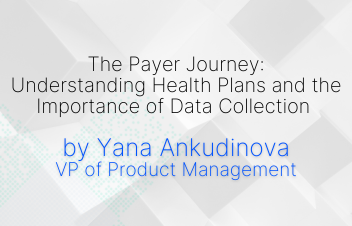The Centers for Medicare & Medicaid Services (CMS) 2025 Physician Fee Schedule (PFS) Final Rule brings notable updates to the Quality Payment Program (QPP), which will impact eligible clinicians, groups, virtual groups, subgroups, and APM entities. Whether you’re participating through MIPS, MVPs, or an ACO, these changes offer opportunities to streamline reporting, leverage new scoring adjustments, and enhance patient care. Let’s break down the updates.
The QPP Landscape in 2025: What’s Changing?
CMS’s 2025 rule focuses on refining the QPP to support improved interoperability, reducing reporting burdens, and increasing flexibility for participants. For MIPS, MVPs, and APMs, the updates emphasize quality, efficiency, and tailored reporting options.
MIPS: Core Changes for Clinicians and Groups
- Stable Thresholds for Performance and Data Completeness: The performance threshold remains at 75%, and the data completeness threshold is also unchanged at 75%, providing stability for MIPS participants through 2028.
- New Quality Measures and Flexibility: MIPS now includes seven additional quality measures, updates to 66, and removal of 10 outdated measures. This provides flexibility and ensures that clinicians focus on measures most relevant to their practice.
- Specialty-Focused MVPs: Six new MIPS Value Pathways (MVPs) are tailored for specific specialties, such as dermatology, ophthalmology, and gastroenterology. These provide clinicians with a focused and streamlined option for reporting and aligning quality efforts with specialty-driven patient outcomes.
ACO Requirements: The Shift to Electronic Reporting
For Accountable Care Organizations (ACOs) in the Medicare Shared Savings Program (MSSP), the CMS 2025 rule emphasizes the transition to electronic Clinical Quality Measures (eCQMs), with a clear goal of reducing manual entry and improving data accuracy.
- Mandatory eCQMs and APP Plus Reporting: Starting in 2025, all MSSP ACOs are required to report every patient encounter via eCQMs or MIPS CQMs. The APP Plus measure set, focusing on ambulatory care and chronic disease management, is also mandatory for ACOs.
- Efficiency and Accuracy with eCQMs: eCQMs streamline data extraction from EHRs, reducing administrative strain and enabling ACOs to adjust care strategies based on real-time insights. This shift positions ACOs to meet CMS’s goals for interoperability and long-term sustainability in quality reporting.
APMs and Complex Organization Adjustments
Alternative Payment Models (APMs) play a central role in the QPP, especially for organizations managing complex, multi-provider arrangements.
- Support for Complex Entities: CMS introduced a complex organization adjustment for APMs, subgroups, and virtual groups to account for the unique challenges of managing and reporting quality data across varied providers and care settings.
- Cost and Quality Scoring Refinements: With updates to benchmarking methodologies, CMS aims to more accurately reward organizations that manage costs effectively without compromising care quality. This offers APM entities, including ACOs, an incentive to adopt efficient, quality-focused practices.
Promoting Interoperability and Improvement Activities: Reduced Burden Across the Board
CMS has refined the requirements in these categories to support a more manageable reporting process for all participants.
- Promoting Interoperability: Automatic reweighting is now limited to specific groups, such as hospital-based and non-patient-facing clinicians, clarifying eligibility and simplifying compliance.
- Simplified Improvement Activities: CMS has removed activity weightings in this category, with small practices required to attest to just one activity and all other clinicians, groups, and virtual groups needing only two. This streamlined approach reduces burden while supporting meaningful improvement efforts.
How MRO Supports Organizations Through QPP Transitions
At MRO, we understand the challenges that come with regulatory updates, and we’re committed to helping organizations of all sizes and types adapt and succeed under the 2025 QPP changes. Our solutions provide:
- Enhanced eCQM Reporting: MRO’s EHR integration and data extraction solutions ensure accurate, compliant eCQM submissions, allowing your organization to stay ahead in the transition to electronic reporting.
- Polaris Registry for MIPS Reporting: MRO’s Polaris Registry streamlines MIPS reporting by allowing eligible clinicians and groups to easily track and submit performance data across quality measures. With Polaris, MIPS participants can ensure accuracy and compliance while maximizing their performance scores under the 2025 updates.
- Data Analytics for Real-Time Insights: With MRO’s analytics tools, participants can track performance, identify areas for improvement, and make data-driven adjustments, helping meet QPP targets with ease.
- Tailored Support Across QPP Tracks: Whether you’re in MIPS, an ACO, or an APM, MRO’s suite of services is designed to simplify compliance and boost your quality performance outcomes.
CMS’s 2025 Final Rule introduces both challenges and opportunities. By focusing on interoperability, reduced reporting burdens, and electronic submissions, CMS aims to support a sustainable, quality-driven healthcare system. With MRO’s expertise in health information management, your organization can navigate these updates confidently and turn regulatory requirements into avenues for improved patient care.
Interested in learning more about how MRO can help your organization succeed in the ever-changing regulatory world? Contact us today to explore our solutions and get started on the path to 2025 success.
_______________________
The above blog post contains research and contextual conclusions provided by Ranu Ray, CMS Research Business Analyst.



